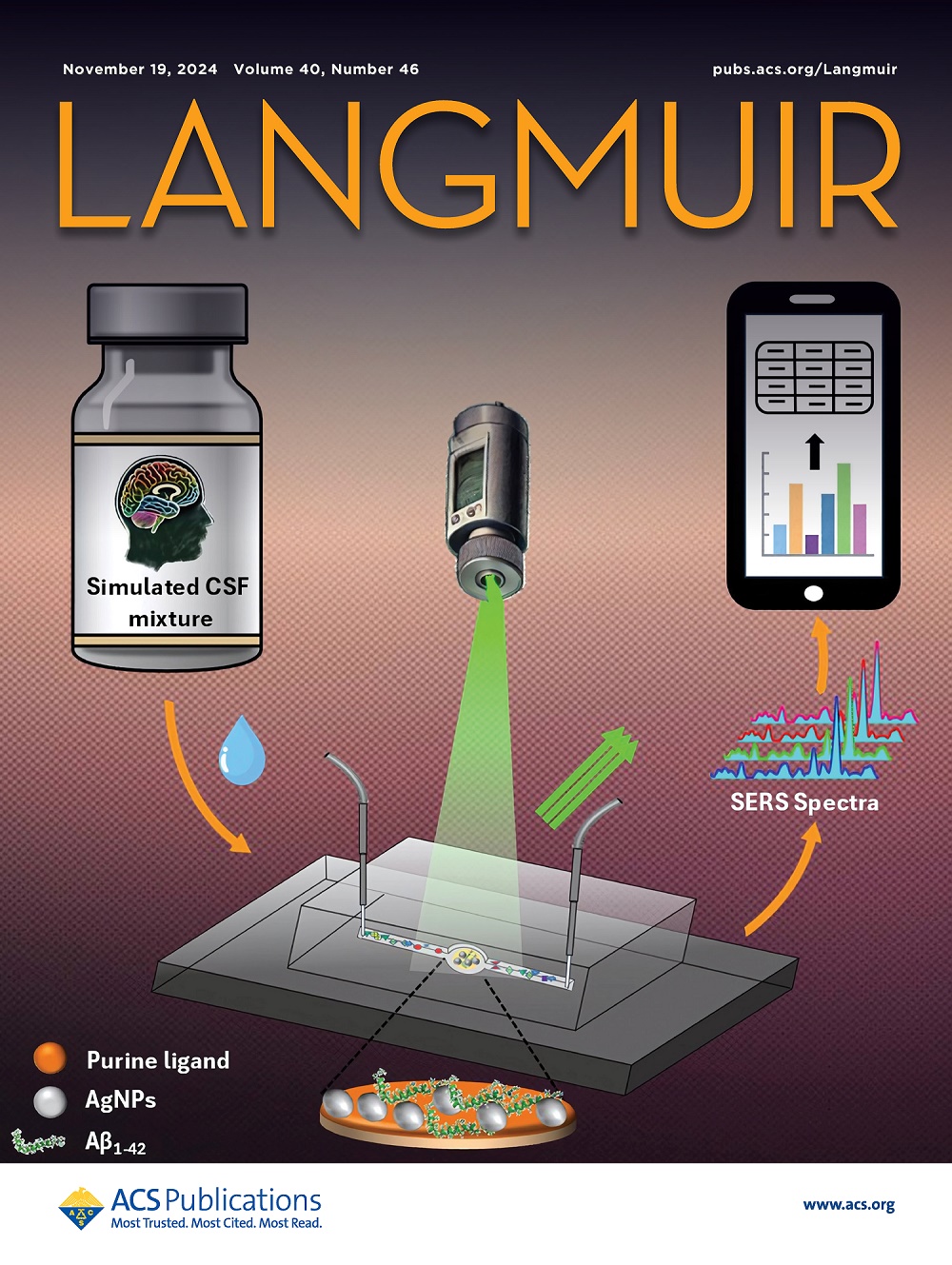Interrogating the Surface Interactions of Resilin-Like Peptides on h-BN and Graphene
IF 3.7
2区 化学
Q2 CHEMISTRY, MULTIDISCIPLINARY
引用次数: 0
Abstract
Resilin protein-based elastomers could provide pathways to synthetic materials with increased mechanical resilience; however, it remains challenging to replicate their properties when they are made in the lab. This is because Tyr-based cross-linking is necessary, which may require preorganized configurations of resilin in its natural environment. In previous work, the P1 graphene-binding peptide was conjugated with resilin-like peptides (RLPs) to produce P1/RLP conjugates. The binding of these peptides to the graphene surface was studied using QCM analysis and atomic force microscopy as an initial step toward preorganization for eventual cross-linking. Herein, the adsorption studies of RLPs (R1 and R2) and their conjugates with the P1 graphene-binding peptide are studied on hexagonal boron nitride (h-BN) using QCM analysis and molecular modeling. The results are compared with those of previous work based on the graphene surface. The binding affinity of P1/RLPs to h-BN is found to be similar to that of graphene, with notable changes that can be attributed to the variations in the surface composition. In addition, molecular simulations of the surface-adsorbed P1/RLP structures on h-BN indicate substantial differences compared to those on the graphene surface, with the RLP domain dominating the binding on h-BN. Moreover, the parent RLP peptides demonstrated increased binding to h-BN, which was not observed with graphene, thus indicating that h-BN is likely to be a poorer surface for peptide preorganization for eventual cross-linking for the controlled preparation of resilient elastomers.

求助全文
约1分钟内获得全文
求助全文
来源期刊

Langmuir
化学-材料科学:综合
CiteScore
6.50
自引率
10.30%
发文量
1464
审稿时长
2.1 months
期刊介绍:
Langmuir is an interdisciplinary journal publishing articles in the following subject categories:
Colloids: surfactants and self-assembly, dispersions, emulsions, foams
Interfaces: adsorption, reactions, films, forces
Biological Interfaces: biocolloids, biomolecular and biomimetic materials
Materials: nano- and mesostructured materials, polymers, gels, liquid crystals
Electrochemistry: interfacial charge transfer, charge transport, electrocatalysis, electrokinetic phenomena, bioelectrochemistry
Devices and Applications: sensors, fluidics, patterning, catalysis, photonic crystals
However, when high-impact, original work is submitted that does not fit within the above categories, decisions to accept or decline such papers will be based on one criteria: What Would Irving Do?
Langmuir ranks #2 in citations out of 136 journals in the category of Physical Chemistry with 113,157 total citations. The journal received an Impact Factor of 4.384*.
This journal is also indexed in the categories of Materials Science (ranked #1) and Multidisciplinary Chemistry (ranked #5).
 求助内容:
求助内容: 应助结果提醒方式:
应助结果提醒方式:


